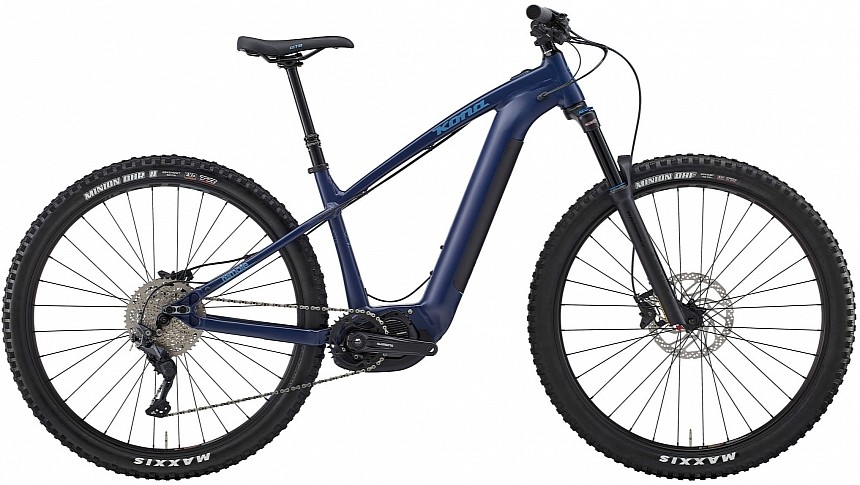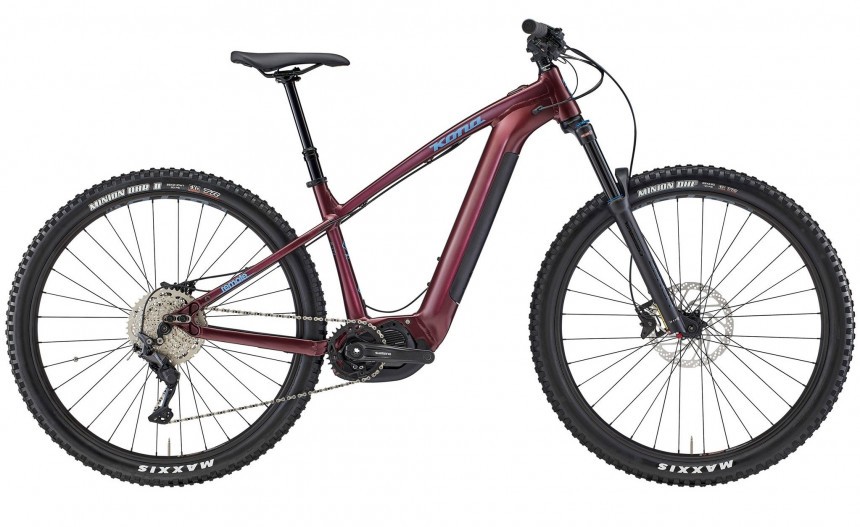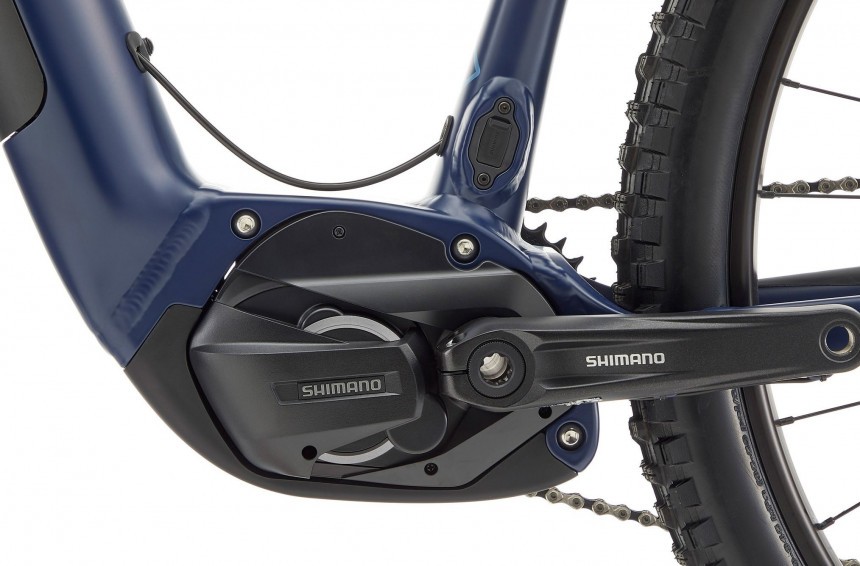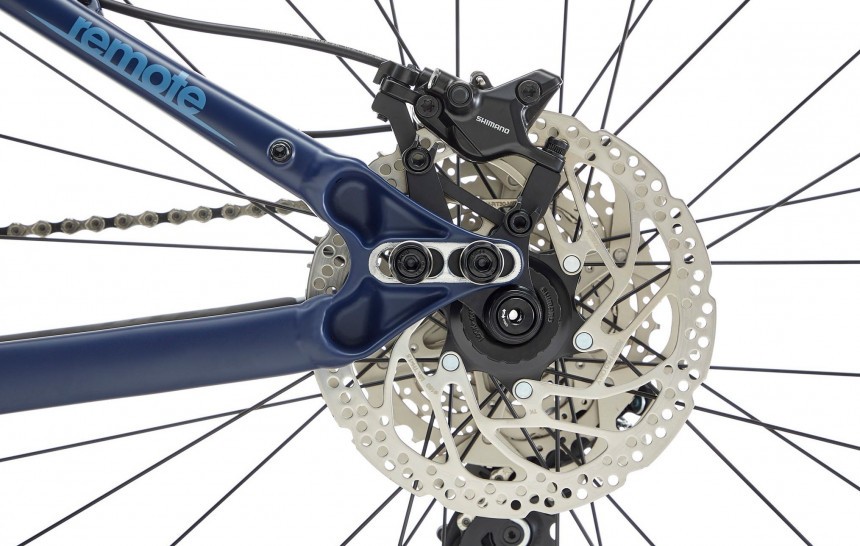I'll admit; I'm a sucker for a hardtail. However, some come across as so dang special that I just can't resist bringing them to light. This is precisely the case with Kona's Remote e-bikes. Let's get to exploring!
Folks, Kona has been a go-to brand for North American mountain bikers since their conception in 1988 and is still seen as such today, over three decades later. These days, this crew ships their machines worldwide, a testament to their success. So, it comes as no surprise that the e-MTB lineup in question today is showing all the right goods to end up on your device's screen.
As I mentioned, I love myself a solid hardtail, and while I haven't ridden the machines we're going to be talking about today, they come across as boasting all the right stuff in all the right places.
Overall, two versions are available on the manufacturer's website, and while there may be no visible changes, there's a reason that one costs $300 more than the other. The least expensive version is selling for a solid €4,700 ($5,000 at current exchange rates); the second sells for a solid €5,000 ($5,300).
Now, for this sort of cash, you can very well deduce that the Remote isn't a bike just for anyone, although Kona does mention that it's "wildly fun, practical, and perhaps the perfect way to dip your toe into the eBike waters!"
In short, you'll spend over $5,000 on one of these, but the tradeoff is a machine that you can use for an array of activities. Best of all, there's a solid touch of electrical power to help you dominate hills and hit flats with Tour de France speeds or whatever you're limited to by local laws and regulations.
Overall, each of these puppies starts off with an aluminum backbone, butted for the right amount of strength-to-weight ratio. While that's nothing new, what I do want to point out about the Remote is its rather wild-card design and geometry.
Take note of how the top tube features a slight curve as it drops nice and low towards the seat tube, offering more than enough clearance on drops. Take in the standard dropper post, and changes on the fly can be made. Just watch out for tire burn on your glutes, a newb move that I still perform with utter perfection, occasionally. Oh, and that head tube, tapers, butted, pinched, the works.
Another aspect I would like to draw some attention to is the chain stay. Upon seeing this section of the bike for the first time, I was reminded a bit of the design we see on some gravel bikes. Sure, it's not the same, but a hint of something is there, leading me to believe this thing can really dig into the ground.
Speaking of head tubes, another aspect I need to point out is this beauty angle. I loved the fact that Kona designed these e-monsters around a rather slack 66-degree head tube angle. Best of all, they went a step further and dropped forks with 140 mm of travel on them. Solid plush fun, no matter the terrain.
As for the all-important electronics, cycling teams of this stature often rely on one of two manufacturers of electronic components, Bosch or Shimano. Sure, other crews like TQ and Fazua are on the rise, but Shimano, the crew providing the gear on the Remote, has been in this business for a long time, and they know how to close the proverbial deal, as they've done here.
Here, Shimano provides a Steps E7000 motor, which can crank out a reasonable 60 Nm (44 lb-ft) of torque running at 250 W. Not great, not terrible, but if you're like me and still want to feel some burn while riding up those hills, this motor unit may offer just that, not to mention that most folks love how quiet this setup tends to be. After all, it's a 250 W motor.
What's neat about smaller or less powerful motors is the fact that they won't be sucking the juice out of your battery like it's a Carpi-Sun on a hot day. With 504 Wh, once again provided by Shimano, you should have to worry too much about "range anxiety." Still, because rides heavily vary from one to the next, it's difficult to gauge just how much range you can squeeze out of a full charge.
Regarding the rest of the Remote, Kona stays true to Shimano and drops a Deore setup with 11-46t on the back and a 34t chainring at the front, MT410 brake calipers with 203 mm (8 in) rotors on the front and 180 mm (7.2 in) rotors on the rear. Oh, and in case it wasn't clear enough, 29 in Maxxis Minion rubbers are strapped to a set of WTB ST i35 rims.
Now, trails and all aside, there's another benefit to hardtails: using it on just about any road your city can throw at you. Because hardtails feature no rear suspension, these babies direct all your power straight into the rear wheel, proving indispensable in cities with rough streets. A solid rear construction also means the possibility for cargo racks, and the Remote has that, too. Ride far, camp out on the edge of town, come back, and then go to work.
It comes across as the sort of do-it-all e-bike, but that price is sure to push back the newcomers to this sport. It's not that the bike doesn't hold up its value; it's just more than the average Joe is willing to spend on something like this. Then again, Kona is above average, to say the least. Just a little something-something to think about if you're looking to fill up your Christmas list.
As I mentioned, I love myself a solid hardtail, and while I haven't ridden the machines we're going to be talking about today, they come across as boasting all the right stuff in all the right places.
Overall, two versions are available on the manufacturer's website, and while there may be no visible changes, there's a reason that one costs $300 more than the other. The least expensive version is selling for a solid €4,700 ($5,000 at current exchange rates); the second sells for a solid €5,000 ($5,300).
Now, for this sort of cash, you can very well deduce that the Remote isn't a bike just for anyone, although Kona does mention that it's "wildly fun, practical, and perhaps the perfect way to dip your toe into the eBike waters!"
Overall, each of these puppies starts off with an aluminum backbone, butted for the right amount of strength-to-weight ratio. While that's nothing new, what I do want to point out about the Remote is its rather wild-card design and geometry.
Take note of how the top tube features a slight curve as it drops nice and low towards the seat tube, offering more than enough clearance on drops. Take in the standard dropper post, and changes on the fly can be made. Just watch out for tire burn on your glutes, a newb move that I still perform with utter perfection, occasionally. Oh, and that head tube, tapers, butted, pinched, the works.
Another aspect I would like to draw some attention to is the chain stay. Upon seeing this section of the bike for the first time, I was reminded a bit of the design we see on some gravel bikes. Sure, it's not the same, but a hint of something is there, leading me to believe this thing can really dig into the ground.
As for the all-important electronics, cycling teams of this stature often rely on one of two manufacturers of electronic components, Bosch or Shimano. Sure, other crews like TQ and Fazua are on the rise, but Shimano, the crew providing the gear on the Remote, has been in this business for a long time, and they know how to close the proverbial deal, as they've done here.
Here, Shimano provides a Steps E7000 motor, which can crank out a reasonable 60 Nm (44 lb-ft) of torque running at 250 W. Not great, not terrible, but if you're like me and still want to feel some burn while riding up those hills, this motor unit may offer just that, not to mention that most folks love how quiet this setup tends to be. After all, it's a 250 W motor.
What's neat about smaller or less powerful motors is the fact that they won't be sucking the juice out of your battery like it's a Carpi-Sun on a hot day. With 504 Wh, once again provided by Shimano, you should have to worry too much about "range anxiety." Still, because rides heavily vary from one to the next, it's difficult to gauge just how much range you can squeeze out of a full charge.
Now, trails and all aside, there's another benefit to hardtails: using it on just about any road your city can throw at you. Because hardtails feature no rear suspension, these babies direct all your power straight into the rear wheel, proving indispensable in cities with rough streets. A solid rear construction also means the possibility for cargo racks, and the Remote has that, too. Ride far, camp out on the edge of town, come back, and then go to work.
It comes across as the sort of do-it-all e-bike, but that price is sure to push back the newcomers to this sport. It's not that the bike doesn't hold up its value; it's just more than the average Joe is willing to spend on something like this. Then again, Kona is above average, to say the least. Just a little something-something to think about if you're looking to fill up your Christmas list.















